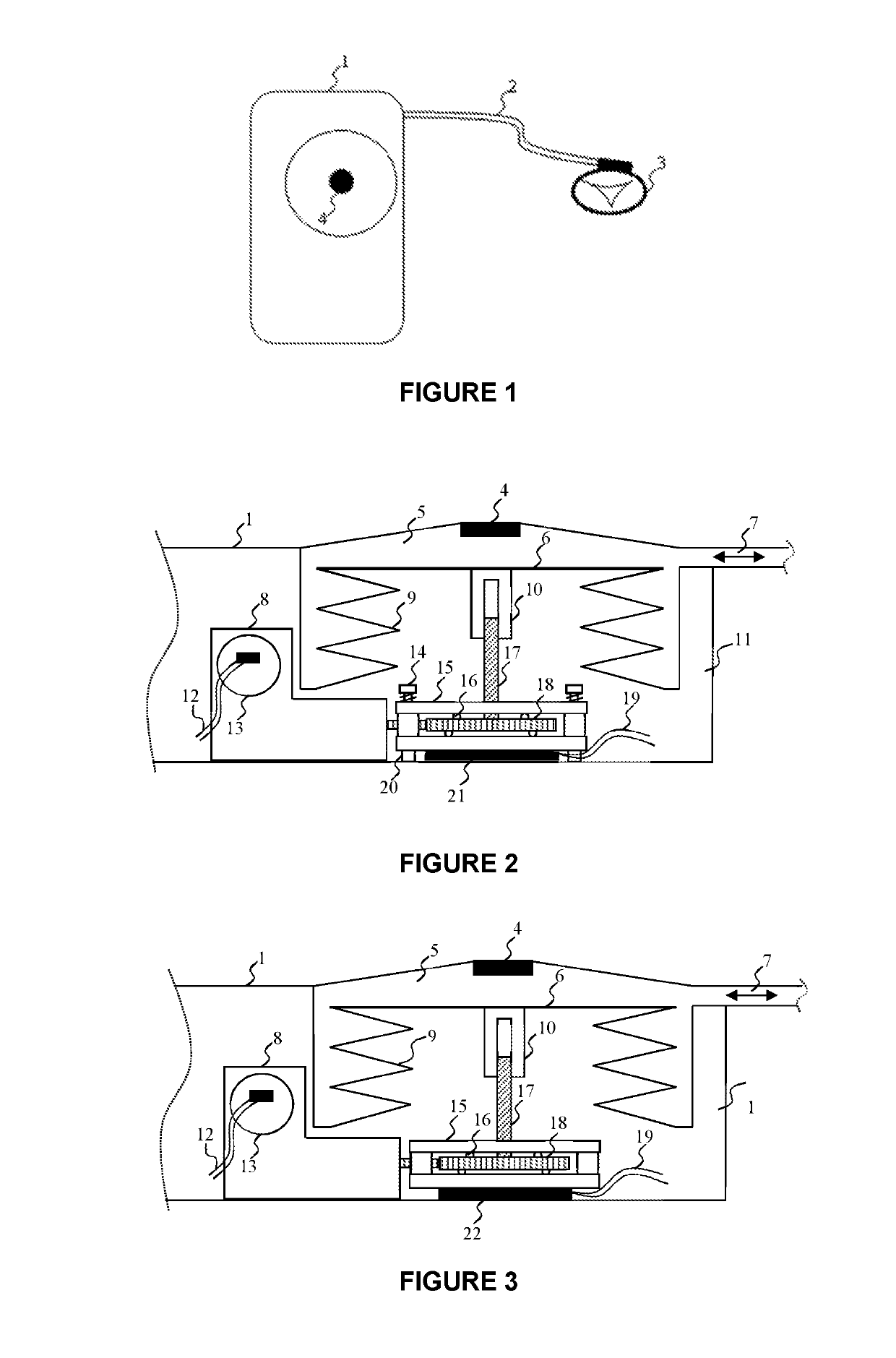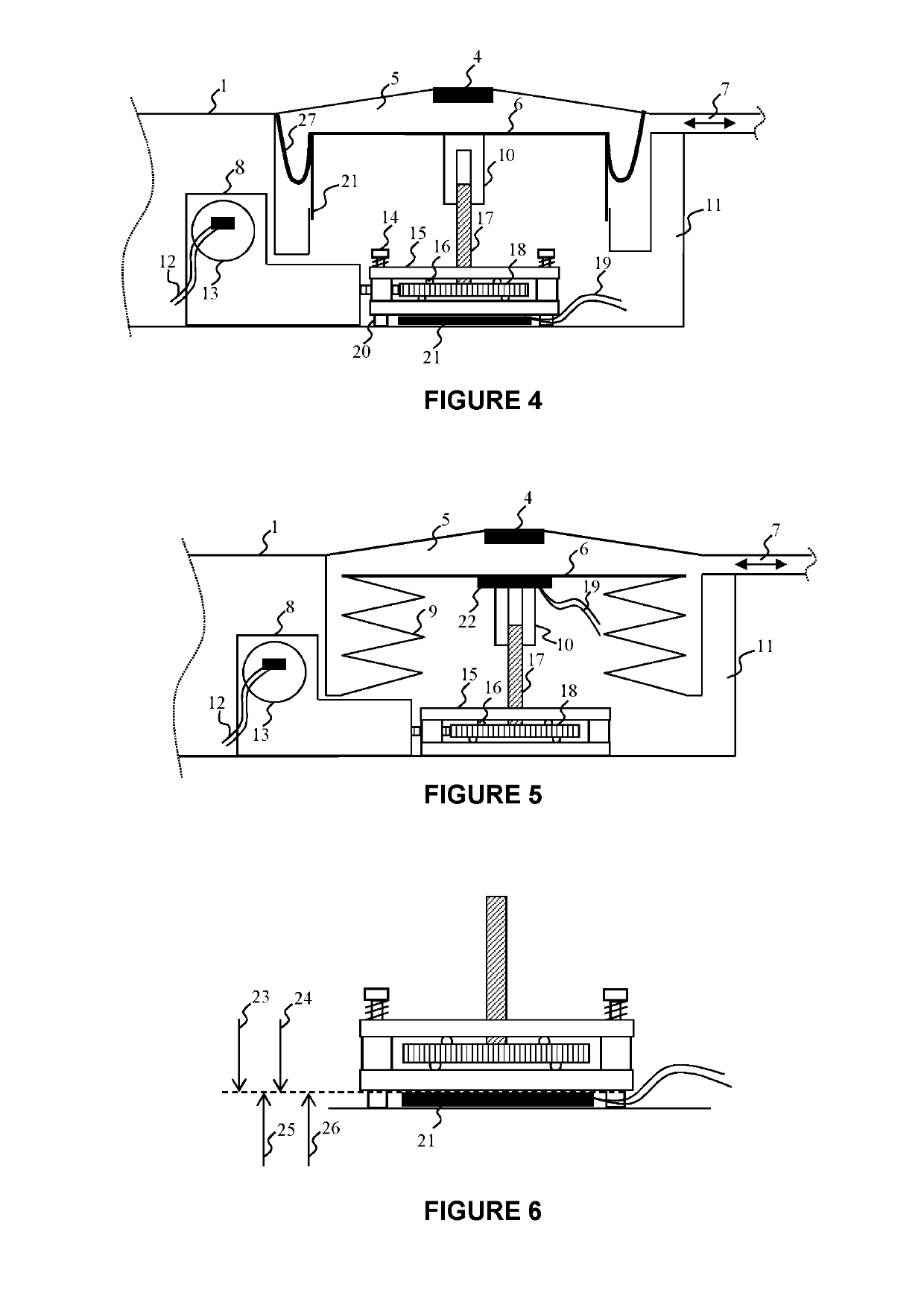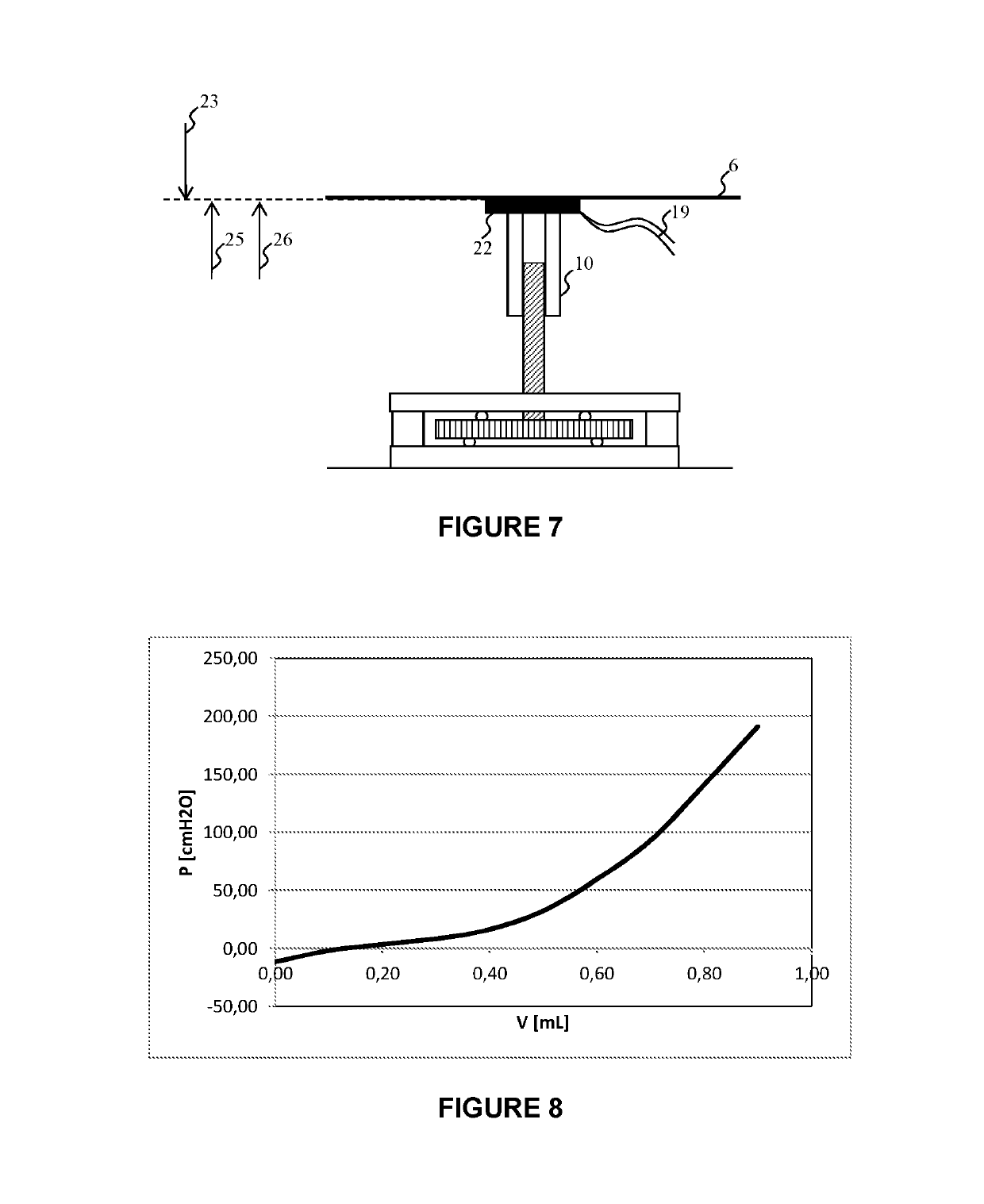Implantable occlusion system
a technology of occlusion system and occlusion plate, which is applied in the field of implantable occlusion plate, can solve the problems of inability to achieve industrially, inability to achieve mechanical properties of membranes with significant differences, and inability to manufacture delicate methods
- Summary
- Abstract
- Description
- Claims
- Application Information
AI Technical Summary
Benefits of technology
Problems solved by technology
Method used
Image
Examples
example 1
[0190]Measurement of the pressure in the fluidic circuit from a device according to the embodiment described in FIG. 2, comprising a force sensor only measuring compressive forces.
[0191]For i=0 (upper position of the bellows, corresponding to a minimum volume of the reservoir), the processing unit performs the following calculation for measuring the pressure P1 in the fluidic circuit:
[0192]P1=Fsensor-201×10-3
[0193]For a relative zero pressure in the fluidic circuit for example, the force sensor measures the compressive force of the pre-stress (20 N), as well as the force related to the atmospheric pressure difference (900 hPa) exerted on the body of the patient and therefore on the flexible occlusive sleeve and the gas pressure in the casing (1,000 hPa) i.e. a value P1 calculated by the processing unit:
[0194]Fsensor=20N+Seff×(Patm-Pinit)Fsensor=20N+1.10-3×(90000-100000)=10NP1=10-201×10-3=-10kPa
[0195]The relative pressure P2 in the fluidic circuit may be inferred therefro...
example 2
[0213]Measurement of the pressure in the fluidic circuit from a device based on the embodiment described in FIG. 5, comprising a force sensor capable of measuring compressive forces and traction forces.
[0214]For i=0, the processing unit performs the following calculation for measuring the pressure in the fluidic circuit:
[0215]P1=Fsensor1×10-3
[0216]For a zero relative pressure in the fluidic circuit for example, the force sensor only measures a force related to the atmospheric pressure difference (900 hPa) exerted on the body of the patient, and therefore on the flexible occlusive sleeve, and the gas pressure in the casing (1,000 hPa) corresponding to a force of −10N, i.e. a value calculated by the processing unit:
[0217]P1=-101×10-3=-10kPa
[0218]The relative pressure P2 in the fluidic circuit may be inferred therefrom:
P2=P1+(Pinit−Patm)
P2=−10000+(100000−90000)=0 Pa
[0219]For a relative pressure in the fluidic circuit of 5 kPa for example, the only force on the force sensor is the...
PUM
 Login to View More
Login to View More Abstract
Description
Claims
Application Information
 Login to View More
Login to View More - R&D
- Intellectual Property
- Life Sciences
- Materials
- Tech Scout
- Unparalleled Data Quality
- Higher Quality Content
- 60% Fewer Hallucinations
Browse by: Latest US Patents, China's latest patents, Technical Efficacy Thesaurus, Application Domain, Technology Topic, Popular Technical Reports.
© 2025 PatSnap. All rights reserved.Legal|Privacy policy|Modern Slavery Act Transparency Statement|Sitemap|About US| Contact US: help@patsnap.com



